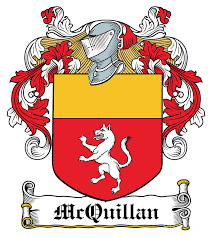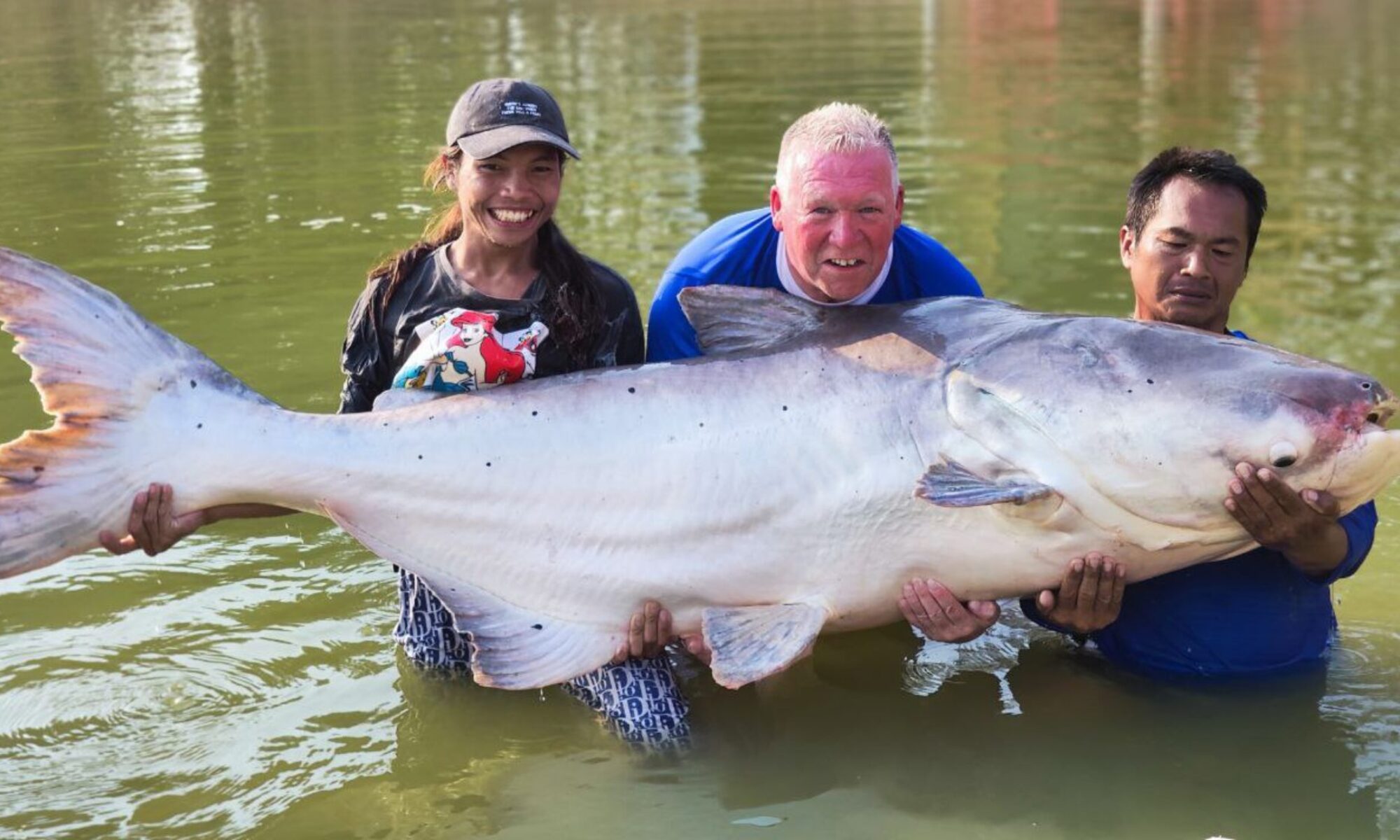Yes, the largest scaled freshwater fish on the planet is the mighty Arapaima Gigas and there is few places where it can be caught so readily outside of South America but Thailand is without a doubt on the top of the list of where to catch Arapaima
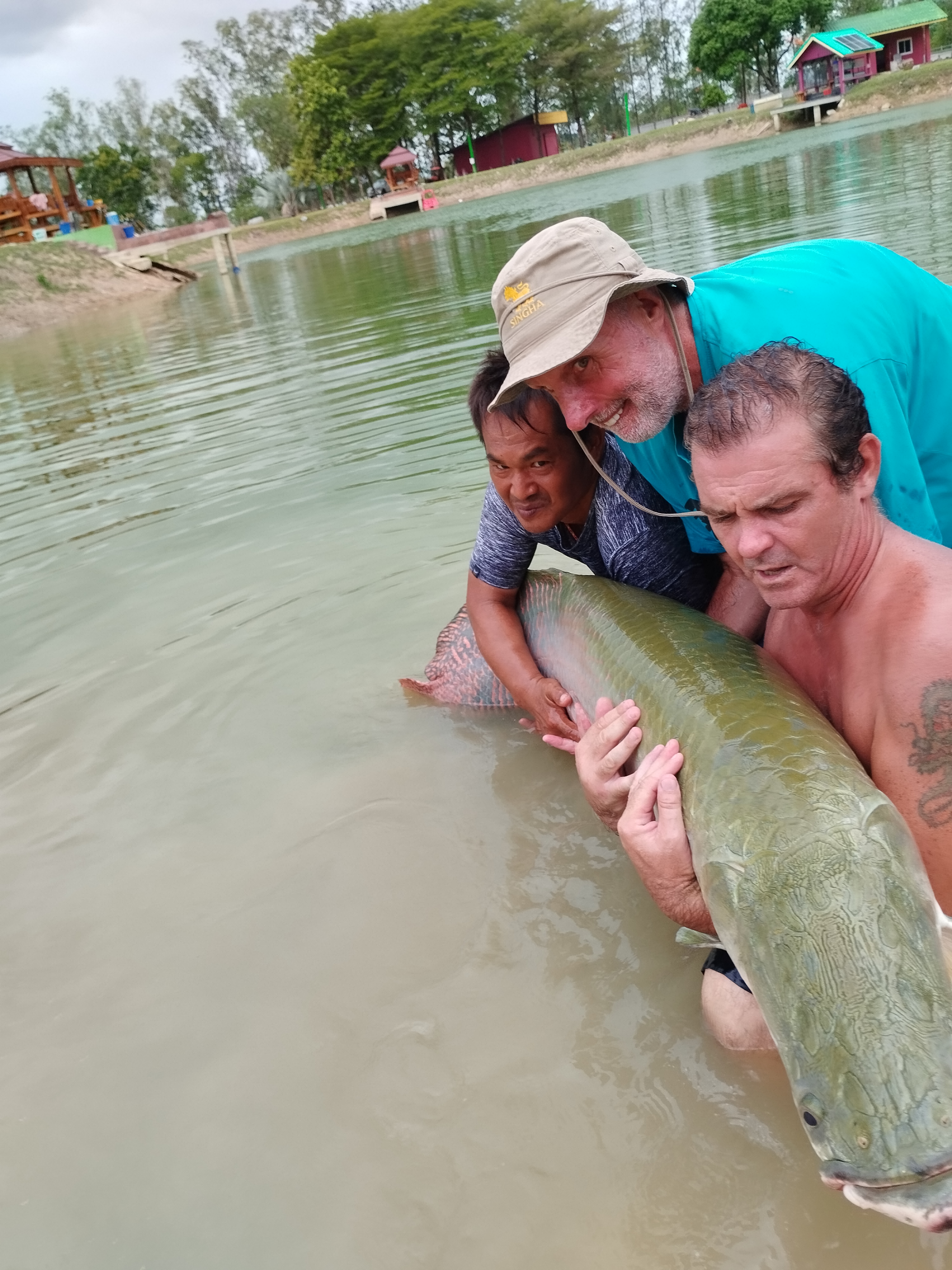



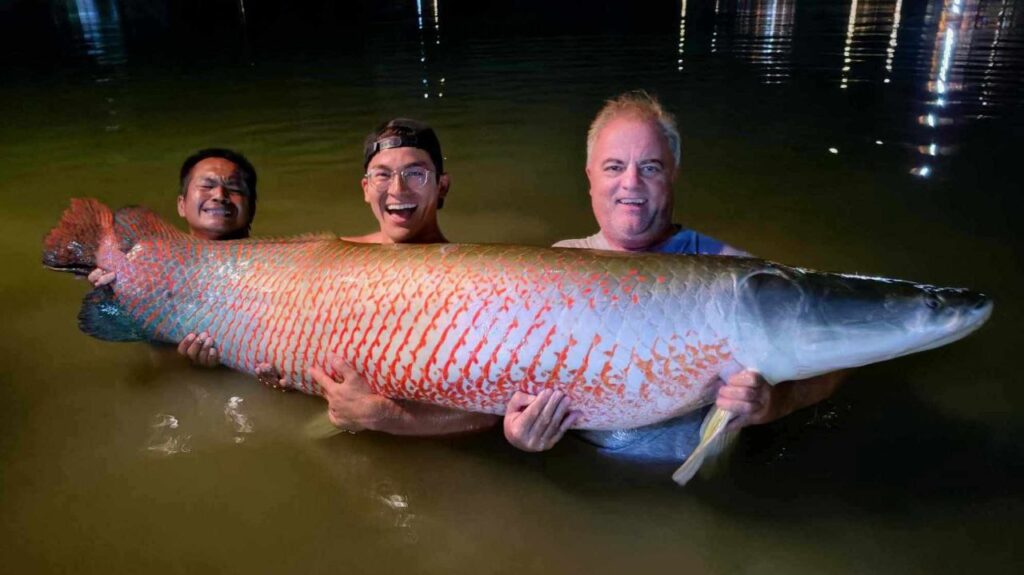
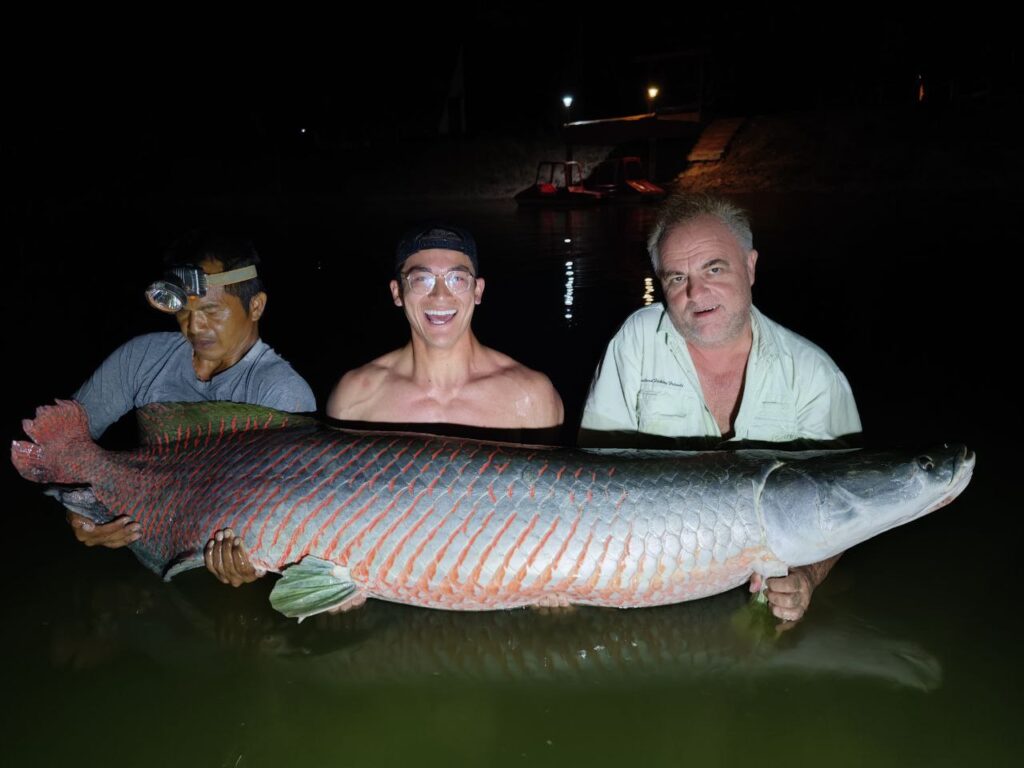
“Beautiful place, really comfortable accommodation, great fish. The food is top draw and Bee and Shane very hospitable hosts. Thanks guys, will be returning“
https://www.facebook.com/permalink.php?story_fbid=266657126355412&id=100090333780988
Who fishes for Arapaima?
Fishing for Arapaima is an anglers dream, people fly from all over the globe to have a chance of hooking into one of these monster fish. The novice angler to the seasoned angler, there is no angler which cannot try to land an arapaima in Thailand.
How big can Arapaima get?
As the largest scaled fish on the planet, they can get to monstrous sizes with lengths above 3 meters and weights exceeding 250 kilo.
How long can Arapaima fight?
While being large fish and the usual modus operandi for large fish is slow and steady, this is not the case for the Arapaima. Due to their delicate nature and their need to breath air, it is best to land them fast.
Arapaima gigas: Exploring the Majesty of the Giant Amazonian Fish
Arapaima gigas, also known as the Pirarucu, is a species of freshwater fish native to the Amazon Basin in South America. Renowned as one of the largest freshwater fish in the world, the Arapaima gigas is a true titan of the rivers, captivating scientists and adventurers alike with its imposing presence and unique characteristics.
Ecosystem: Navigating the Depths of the Amazon
The Amazon rainforest, often dubbed as the “lungs of the Earth,” serves as the backdrop for the remarkable existence of the Arapaima gigas. This immense ecosystem, spanning across nine countries in South America, encompasses a diverse range of habitats, from dense rainforests to sprawling river systems. Within this labyrinth of green, the Arapaima gigas finds its home in the slow-moving waters of the Amazon’s tributaries and flooded forests.
In these tranquil realms, the Arapaima gigas reigns supreme, navigating the murky depths with grace and power. Despite its massive size, this majestic fish is remarkably well-adapted to its environment, possessing specialized respiratory organs that allow it to gulp air at the water’s surface. This adaptation is essential for surviving in oxygen-deprived waters during the dry season when river levels drop and oxygen levels plummet.
Habitat: The Sanctuary of the Arapaima Gigas
The habitat of the Arapaima gigas is as diverse as the Amazon itself, encompassing a range of aquatic environments teeming with life. During the wet season, when the Amazon River swells to engulf vast swathes of land, the Arapaima gigas takes advantage of the newly flooded forests, venturing into inundated areas to forage for food and breed.
As the dry season approaches and the waters recede, the Arapaima gigas retreats to deeper pools and channels, where it can find refuge from predators and access pockets of oxygen-rich water. Here, amidst submerged tree roots and tangled vegetation, the Arapaima gigas establishes its territory, fiercely defending its domain against intruders.
In addition to serving as a sanctuary for the Arapaima gigas, the flooded forests of the Amazon play a vital role in supporting a myriad of other species, from elusive river dolphins to colorful macaws. These biodiverse ecosystems are not only essential for the survival of countless plant and animal species but also play a critical role in regulating the global climate and maintaining the ecological balance of the planet.
Preserving the Legacy of the Arapaima Gigas
The Arapaima gigas stands as a symbol of the rich biodiversity and natural heritage of the Amazon Basin. As pressures from deforestation, habitat degradation, and overfishing continue to threaten the fragile ecosystems of the Amazon, it is imperative that we take action to protect the habitats and species that call this region home.
Through conservation efforts, sustainable management practices, and the promotion of responsible tourism, we can ensure that future generations have the opportunity to marvel at the majesty of the Arapaima gigas and experience the wonders of the Amazon rainforest in all its glory. Together, we can preserve the legacy of this extraordinary fish and safeguard the unparalleled beauty of the Amazon for generations to come.
